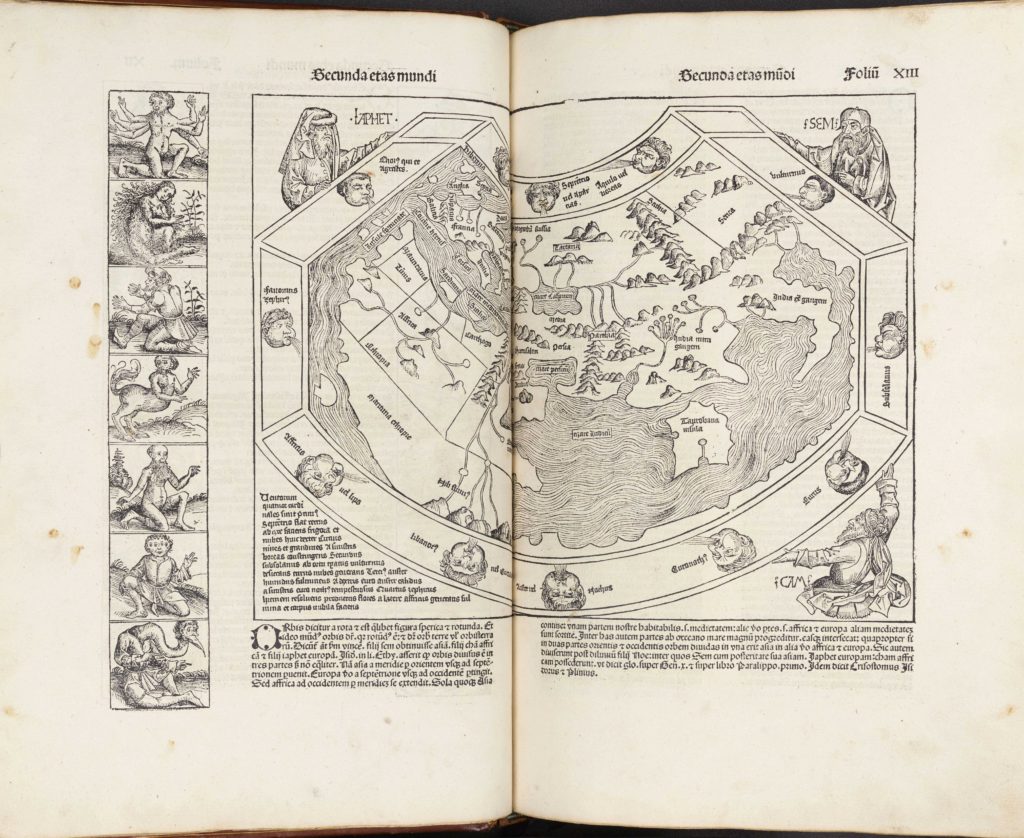Especially engaging are the physically extraordinary beings situated to the left of the map inside individual, framed landscapes. Known collectively as the ‘Monstrous Races’, their existence in the vaguely-defined lands of India, Ethiopia and the Far North had long been contested. However, many world travellers claimed to have encountered them, and they were familiar to the wider public from representations in other books and artistic media, including sculpture and stained glass. They were thus recognizable on sight – and without captions – from top to bottom as a Six-Armed Man, a Wild Woman, a Speechless Man, a Satyr, a Hermaphrodite, a Four-Eyed Ethiopian, and a Crane Man. That they are confined to their frames and relegated to the far edge of the folio was a reminder to readers that these ‘Races’ – thought to be either dangerously aggressive or pathologically shy – were located far beyond the limits of the civilized world.
The major question this map raises is: Why, even though it was included in a book aimed at an educated audience, does it not represent the world as it was known and understood in 1493? While it does include the Gulf of Guinea discovered in 1470, other newly discovered territories and encountered peoples are nowhere in sight, even though they were depicted on other maps created at this time. The key to understanding these omissions lies in the identification of the three bearded men gripping the frame around the outside of the world, as though they are holding it up. Inscribed IAPHET, SEM, and CAM, they represent the three sons of Noah, who after the Flood were entrusted by their father with custodianship of the world’s three continents: Europe was given to Japhet, Asia went to Shem, and Ham got Africa. The map’s early modern viewers were thus transported back to the time of Genesis and the need for the world’s repopulation following the great deluge sent by God as punishment for humanity’s sins. This religious aspect of the map explains why it was positioned between a series of scenes leading from Creation to Noah’s Ark and a genealogical image of Noah and his descendants. In this way, it participates in a true world chronicle, envisioned from Day One until 1493, when the book went to press. The map’s chronological dimension is further enriched by the costumes worn by the different figures: while Noah’s sons wear generic ‘oriental’ garb appropriate to the Biblical past, the Monstrous Races are dressed in more fashionable, European clothing to evoke the viewer’s own world – and perhaps also to suggest that such fantastic, foreign bodies were indeed out there, somewhere.
Debra Strickland, University of Glasgow
